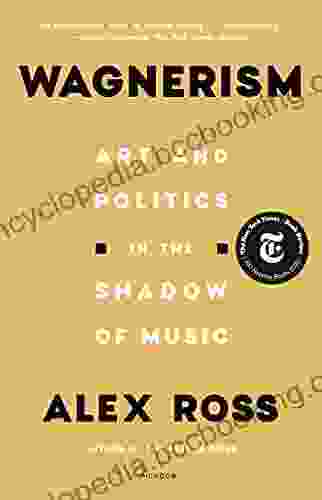Unlocking Supply Chain Success: Building Lean Supply Chains with the Theory of Constraints

In today's fast-paced, competitive business landscape, supply chains play a pivotal role in determining an organization's success. The ability to deliver products and services to customers efficiently, cost-effectively, and on time is paramount. However, traditional supply chain management approaches often fall short of meeting these demands, leading to inefficiencies, bottlenecks, and wasted resources.
Enter the Theory of Constraints (TOC),a groundbreaking approach to supply chain management that provides a systematic framework for identifying and eliminating constraints that hinder performance. By leveraging TOC principles, organizations can create lean, streamlined supply chains that unlock hidden potential and drive exceptional results.
TOC is based on the fundamental understanding that every system has a single constraint, or bottleneck, that limits its overall performance. This constraint can be anything from a machine or process to a policy or mindset. By focusing on identifying and addressing this constraint, organizations can achieve a logarithmic increase in throughput, reduce lead times, and improve profitability.
4.5 out of 5
| Language | : | English |
| File size | : | 4683 KB |
| Text-to-Speech | : | Enabled |
| Screen Reader | : | Supported |
| Enhanced typesetting | : | Enabled |
| Word Wise | : | Enabled |
| Print length | : | 384 pages |
TOC employs a five-step process to achieve this:
- Identify the Constraint: Determine the single factor that is limiting overall system performance.
- Exploit the Constraint: Optimize the performance of the constraint through capacity upgrades, process improvements, or other measures.
- Subordinate Everything: Align all other operations to support and maximize the throughput of the constraint.
- Elevate the Constraint: If the constraint is still limiting performance, break the constraint by investing in new equipment, technology, or processes.
- Return to Step 1: Continuously repeat the process, as new constraints will emerge as the system improves.
Implementing TOC principles in supply chain management offers numerous benefits, including:
- Increased Throughput: By eliminating bottlenecks, TOC allows organizations to move products and materials through the supply chain faster, increasing overall productivity.
- Reduced Lead Times: Shorter lead times enable organizations to respond quickly to customer demands, improving customer satisfaction and reducing inventory costs.
- Improved Profitability: Increased throughput and reduced lead times directly contribute to increased profitability, as organizations can deliver more products or services with less inventory and waste.
- Enhanced Flexibility: TOC provides a framework for adapting to changing market conditions and customer demands by identifying and addressing constraints as they arise.
- Continuous Improvement: The iterative nature of TOC ensures that supply chains are continually optimized and improved, leading to sustained success.
Numerous organizations have successfully implemented TOC in their supply chains, achieving remarkable results.
- Toyota Motor Corporation: Toyota's legendary lean manufacturing system is based on TOC principles, enabling the automaker to achieve industry-leading productivity and quality.
- Boeing Commercial Airplanes: Boeing used TOC to optimize its aircraft production process, reducing lead times by 40% and increasing throughput by 15%.
- Westinghouse Electric Company: Westinghouse implemented TOC in its supply chain for nuclear power plants, resulting in a 30% reduction in lead times and a 20% increase in profit margin.
The Theory of Constraints provides a transformative approach to supply chain management, enabling organizations to overcome constraints, unlock hidden potential, and achieve operational excellence. By embracing TOC principles, businesses can create lean, streamlined supply chains that drive growth, profitability, and customer satisfaction.
If you are ready to unlock the power of lean supply chains and revolutionize your operations, I highly recommend the book "Building Lean Supply Chains with the Theory of Constraints." This comprehensive guide provides a step-by-step roadmap for implementing TOC principles in your organization, empowering you to achieve unprecedented success in the modern supply chain landscape.
Free Download your copy today and embark on the journey to a more efficient, profitable, and customer-centric supply chain.
4.5 out of 5
| Language | : | English |
| File size | : | 4683 KB |
| Text-to-Speech | : | Enabled |
| Screen Reader | : | Supported |
| Enhanced typesetting | : | Enabled |
| Word Wise | : | Enabled |
| Print length | : | 384 pages |
Do you want to contribute by writing guest posts on this blog?
Please contact us and send us a resume of previous articles that you have written.
 Book
Book Novel
Novel Page
Page Chapter
Chapter Text
Text Story
Story Genre
Genre Reader
Reader Library
Library Paperback
Paperback E-book
E-book Magazine
Magazine Newspaper
Newspaper Paragraph
Paragraph Sentence
Sentence Bookmark
Bookmark Shelf
Shelf Glossary
Glossary Bibliography
Bibliography Foreword
Foreword Preface
Preface Synopsis
Synopsis Annotation
Annotation Footnote
Footnote Manuscript
Manuscript Scroll
Scroll Codex
Codex Tome
Tome Bestseller
Bestseller Classics
Classics Library card
Library card Narrative
Narrative Biography
Biography Autobiography
Autobiography Memoir
Memoir Reference
Reference Encyclopedia
Encyclopedia Adam Smiley Poswolsky
Adam Smiley Poswolsky Alannah Foley
Alannah Foley Alan Murchison
Alan Murchison Abigail Griebelbauer
Abigail Griebelbauer Aaron Chapman
Aaron Chapman Alex Gough
Alex Gough Alethea Blackler
Alethea Blackler Abdel Bari Atwan
Abdel Bari Atwan A R Longo
A R Longo Alaina Talboy
Alaina Talboy Adam Aarons
Adam Aarons 2003rd Edition Kindle Edition
2003rd Edition Kindle Edition Alan Zelenetz
Alan Zelenetz Alan Gibbons
Alan Gibbons Aaron Bobrow Strain
Aaron Bobrow Strain Adrian Bardon
Adrian Bardon Adam Winkler
Adam Winkler Agnes Kamara Umunna
Agnes Kamara Umunna Alethea Kontis
Alethea Kontis Alberto Savoia
Alberto Savoia
Light bulbAdvertise smarter! Our strategic ad space ensures maximum exposure. Reserve your spot today!
 Rex HayesFollow ·10.3k
Rex HayesFollow ·10.3k Gabriel MistralFollow ·6.6k
Gabriel MistralFollow ·6.6k Herb SimmonsFollow ·13.3k
Herb SimmonsFollow ·13.3k Bryan GrayFollow ·2.2k
Bryan GrayFollow ·2.2k George HayesFollow ·5.1k
George HayesFollow ·5.1k Chinua AchebeFollow ·6.5k
Chinua AchebeFollow ·6.5k William ShakespeareFollow ·14.3k
William ShakespeareFollow ·14.3k Connor MitchellFollow ·3.7k
Connor MitchellFollow ·3.7k

 Francis Turner
Francis TurnerArt and Politics in the Shadow of Music
Music has...

 Jaylen Mitchell
Jaylen MitchellHow Algorithms Are Rewriting The Rules Of Work
The workplace is...

 Chandler Ward
Chandler WardRio de Janeiro & Minas Gerais Footprint Handbooks:...
Embark on an extraordinary adventure through...

 David Mitchell
David MitchellThe Story of Depression: Understanding and Treating a...
Delving into the Shadows of...

 Al Foster
Al FosterStatistics Done Wrong: The Woefully Complete Guide
Tired of being...

 DeShawn Powell
DeShawn PowellJulia Child's Second Act: A Tale of Triumph,...
Julia Child is an...
4.5 out of 5
| Language | : | English |
| File size | : | 4683 KB |
| Text-to-Speech | : | Enabled |
| Screen Reader | : | Supported |
| Enhanced typesetting | : | Enabled |
| Word Wise | : | Enabled |
| Print length | : | 384 pages |












